Art & Exhibitions
Germany Is Celebrating Gerhard Richter’s 90th Birthday With a Bonanza of Exhibitions. Here’s What to See
Richter, who turned 90 on February 9, is the subject of shows across three cities in his home country.
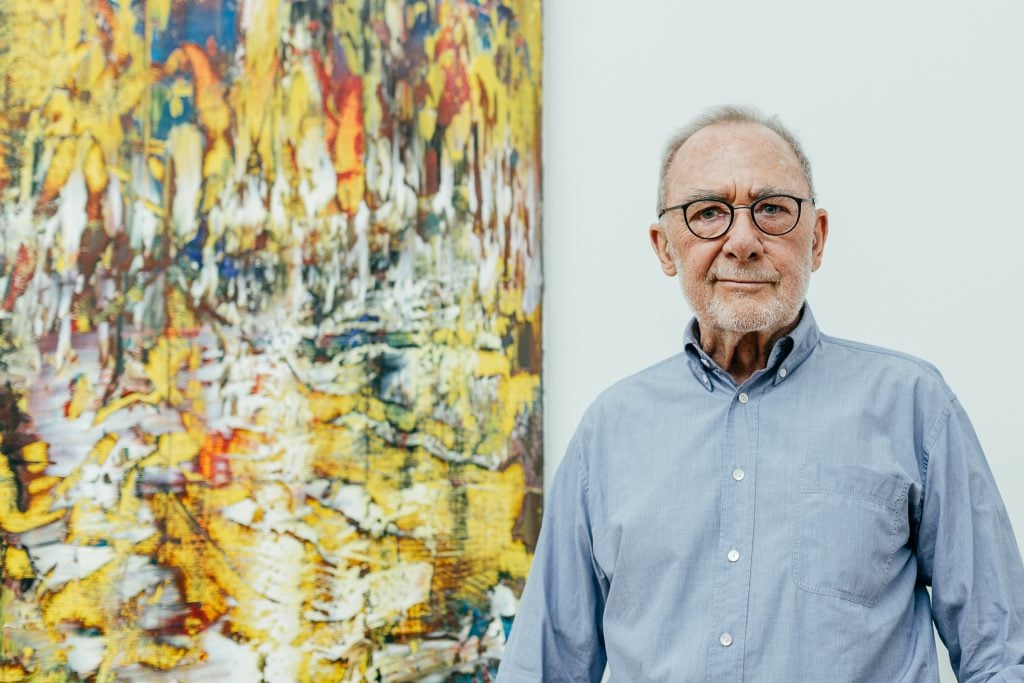
Richter, who turned 90 on February 9, is the subject of shows across three cities in his home country.

Kate Brown

The world-famous artist Gerhard Richter turns 90 today, February 9, and Germany is celebrating his legacy with a group of exhibitions offering new angles on his decades-long career.
The trio of shows take place across three regions where the artist has strong connections.
In his hometown of Dresden, the artist has curated a show of personal works; in his current residential state of the North Rhine Westphalia, a museum-quality show of drawings, his current preferred medium, is on view at the commercial gallery Sies and Höke; and the to-be benefactor of much of his work, the Neue Nationalgalerie in Berlin, is also tipping its hat to the artist via an unprecedented look at his artist books.
Here’s what you need to know about each exhibition.
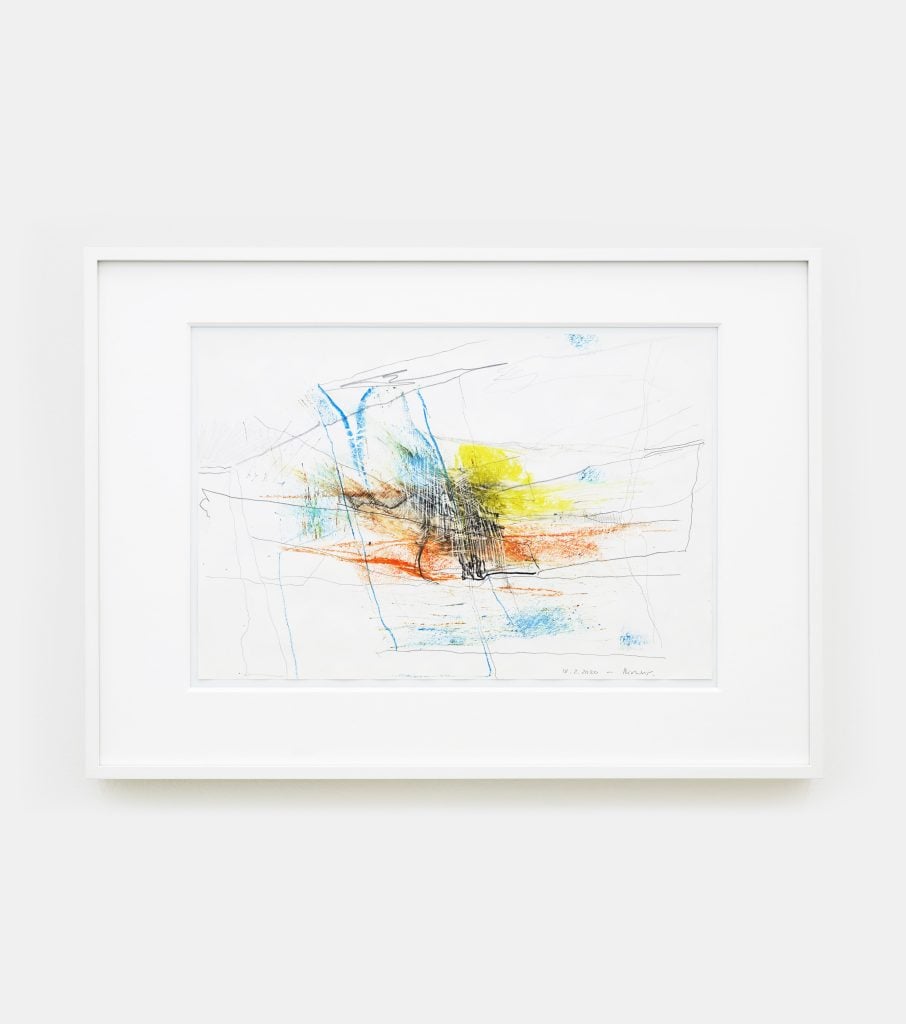
Gerhard Richter 18.2.2020, (2020). Copyright Gerhard Richter. Courtesy Sies and Höke, Düsseldorf. Photographer: Simon Vogel
Sixty drawings offer incredible insight into the artist’s creative process at Sies and Höke in Düsseldorf, the city where the artist taught for many years. Forty of the drawings are for sale, for between €20,000 and half a million euros. Highlights include 21 individual studies for his monumental painting SDI. The drawings give “rare insight into Richter’s working method,” Sies and Höke art dealer Hanne Tonger-Erk said. “There is nothing comparable that he has ever released.”
Nina Höke and Alexander Sies, who collect Richter’s work (officially, Marian Goodman remains his sole gallery) have been preparing the exhibition for five years in close discussion with the artist and scholars. (Drawing is the only medium Richter works in since he retired from painting in 2017.)
“Throughout his oeuvre, Richter made much effort to avoid getting boxed into any contemporary categories,” Richter expert Dieter Schwarz said in a statement. “Instead of explicitness, he relies on ambivalence.”
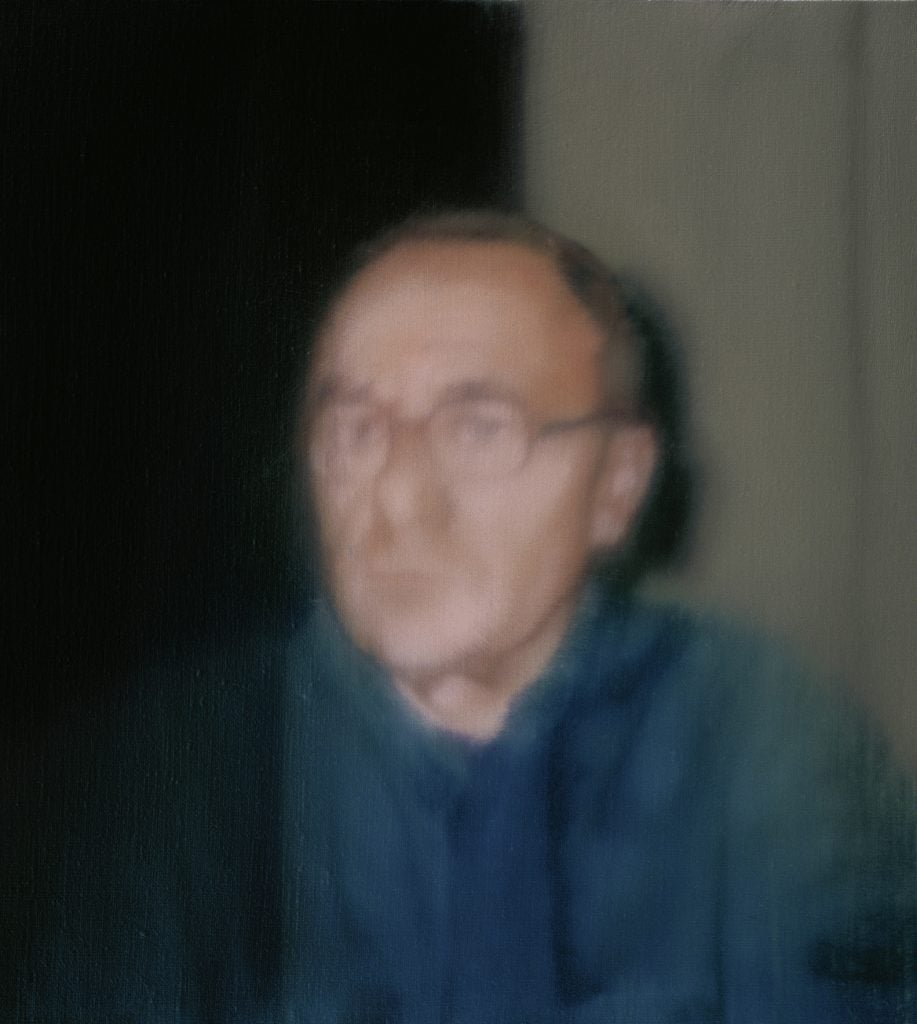
Gerhard Richter, Selbstportrait (836-1) (1996). © Gerhard Richter 2021.
In his hometown of Dresden, where Richter lived and work before he defected to West Germany in 1961, the Albertinum Museum has opened an intimate show of works curated by the artist with the help of Dietmar Elger, director of the Gerhard Richter Archive.
The show, which spans three rooms, focuses on family portraits and landscapes informed by imagery from vacations the artist took over the years. It offers a touching if subtle perspective on the artist’s oeuvre, given that the thrust of his work focuses on wartime atrocities. Instead, this show reveals his inner world; poetically, Abstraktes Bild, his last-ever oil painting, is included.
“From the artist’s perspective, the exhibition is a retrospective of his painting techniques, his own pictorial world, deliberately leaving out the politically relevant works,” Kerstin Küster, a representative of the Gerhard Richter Archive, said. On the occasion of the show, the sixth and final volume of the artist’s catalogue raisonné has also been published.
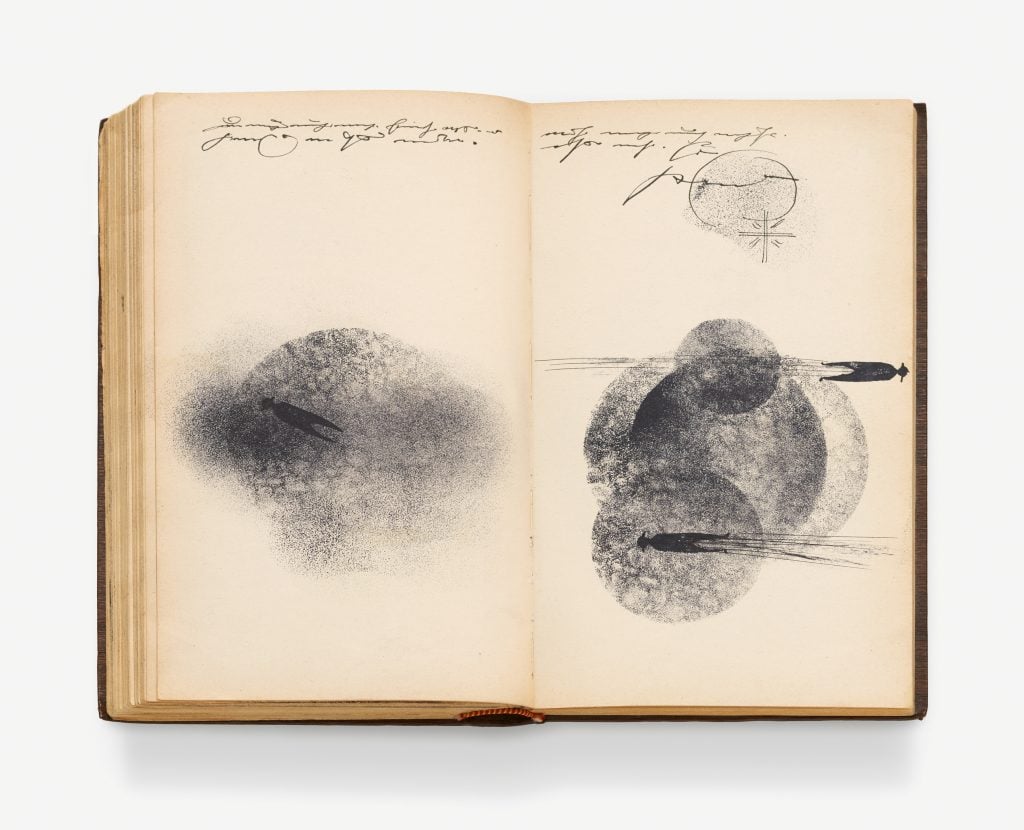
Comic Strip, (1962). Gerhard Richter Archiv, Staatliche Kunstsammlungen Dresden, © Gerhard
Richter 2022
The Neue Nationalgalerie in Berlin (where 100 works by the artist will be on view in 2023 before they go on permanent loan to the Museum of the 20th Century once it opens in 2026, as part of a deal the artist signed with the Berlin state museums last year) is hosting a special exhibition of publications made by the artist.
A large array of books that span several decades will be on view, alongside the large abstract painting Atelier that is in the museum’s collection, as well as prints from the neighboring Kupferstichkabinett. The books are loosely grouped around themes of self-image, photography, and chance.
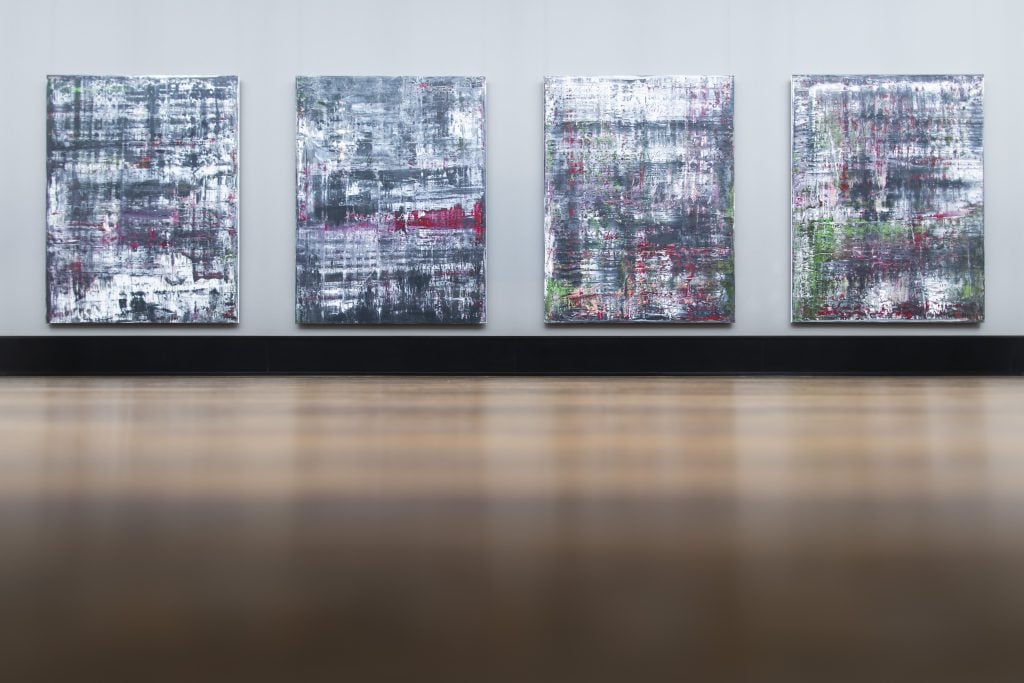
Gerhard Richter, Birkenau Cycle (2014). © SPK / photothek.net / Xander Heinl/ © Gerhard Richter 2021.
Perhaps Gerhard Richter’s most important work, the Birkenau Cycle (2014) considers how to depict the Holocaust and the Nazi atrocities of World War II. The four paintings offer a poignant solution: Richter transferred four photographs taken in secret by prisoners detained at the Auschwitz-Birkenau concentration camp in Poland, and then painted them over until they became almost completely abstracted.
The series is now on view at the K21 in Düsseldorf alongside other works that incorporate the overpainting method Richter developed. During the planning of the exhibition, which also includes some of his reflection paintings, Richter and his wife, painter Sabine Moritz, approached the museum with the idea of also showing a group of small-format drawings by Richter, some of which are just a few months old. Those works are also included.